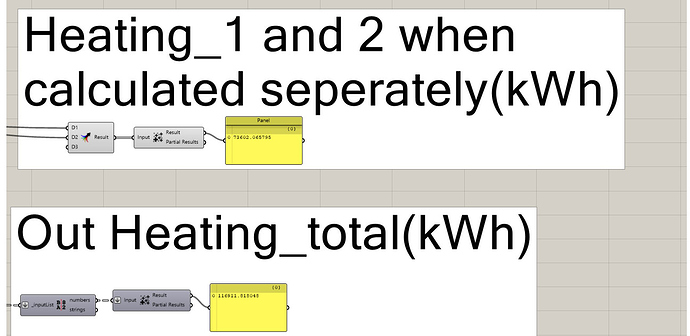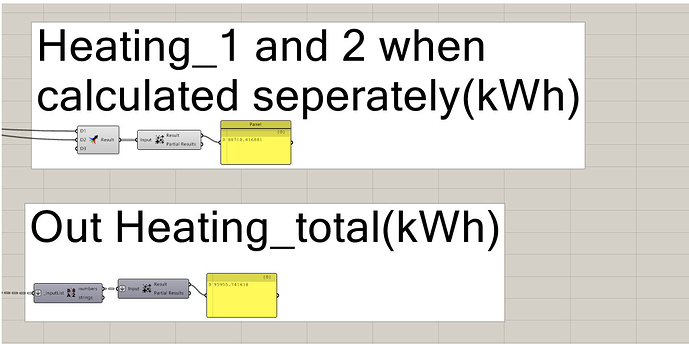Hi everyone! I am running simulations for a high rise building and I want to test two floors. I create the HBzones for the first floor. It is an open office building so I create 4 zones for each orientation and the core. The 4 first zones have air walls when adjacent to other zones, apart from the core (see script).Then I move 20m in Z-axis (copy) that zone, in order to create the second floor that I want to test. I use ideal air loads.
1.When I run each floor separately the results are different (not the sum )compared to when all zones from the two floors are connected together to “export to open studio” component (see image 1).
Why is there a difference in the results? There is a big difference in heating. (I thought that it might be that when all zones run together it is because there is central HVAC system, but this is not the case, as far as I understand. There is no central air loop in ideal air loads, so each zone runs separately. Can you confirm that please?)
- Also, when I change the name of the zones the results change for each zone separately and for total ! At first I name the zones as 1,2,3,4,5 and the name of the copied zone as A (0 translation) and B (20m translation in z axis) (im.1). Then I name them A,B, C, D, E and the name of the copied zone as 1,2 (im.2). (Is it because the zones are calculated in a different order? When I check the output from the heating ,from read EP results component, then I see that the order of how the results are exported is the same in both cases, therefore I assume they were indeed calculated in the same order. )

